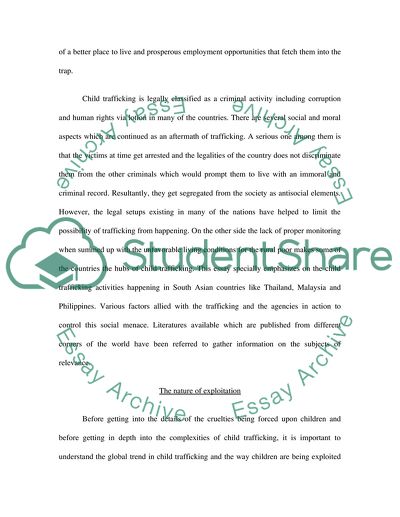Cite this document
(Child Trafficking in South Asian Countries: Sex Trade and Physical Essay, n.d.)
Child Trafficking in South Asian Countries: Sex Trade and Physical Essay. Retrieved from https://studentshare.org/law/1721314-child-trafficking-in-southeast-asia
Child Trafficking in South Asian Countries: Sex Trade and Physical Essay. Retrieved from https://studentshare.org/law/1721314-child-trafficking-in-southeast-asia
(Child Trafficking in South Asian Countries: Sex Trade and Physical Essay)
Child Trafficking in South Asian Countries: Sex Trade and Physical Essay. https://studentshare.org/law/1721314-child-trafficking-in-southeast-asia.
Child Trafficking in South Asian Countries: Sex Trade and Physical Essay. https://studentshare.org/law/1721314-child-trafficking-in-southeast-asia.
“Child Trafficking in South Asian Countries: Sex Trade and Physical Essay”, n.d. https://studentshare.org/law/1721314-child-trafficking-in-southeast-asia.


